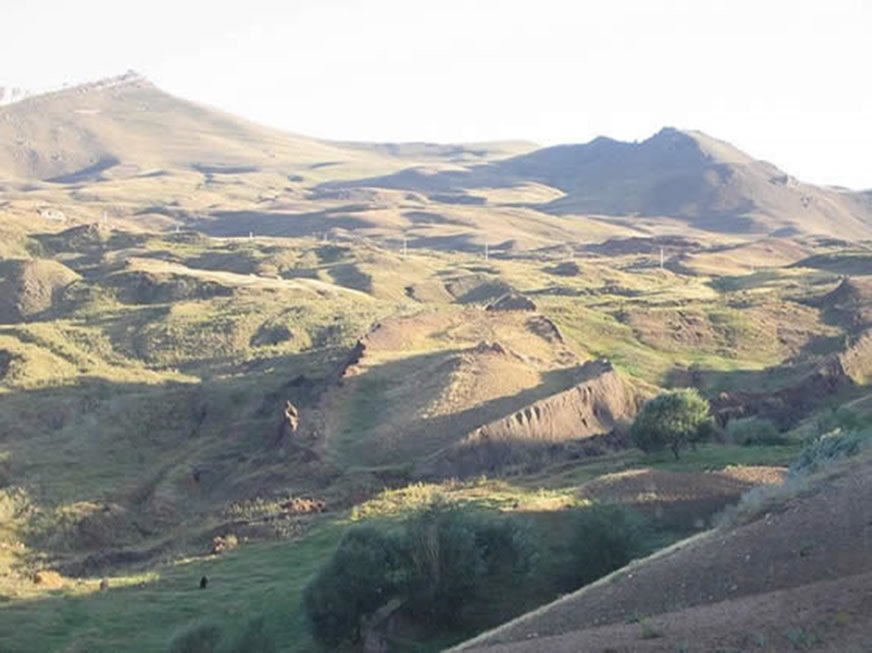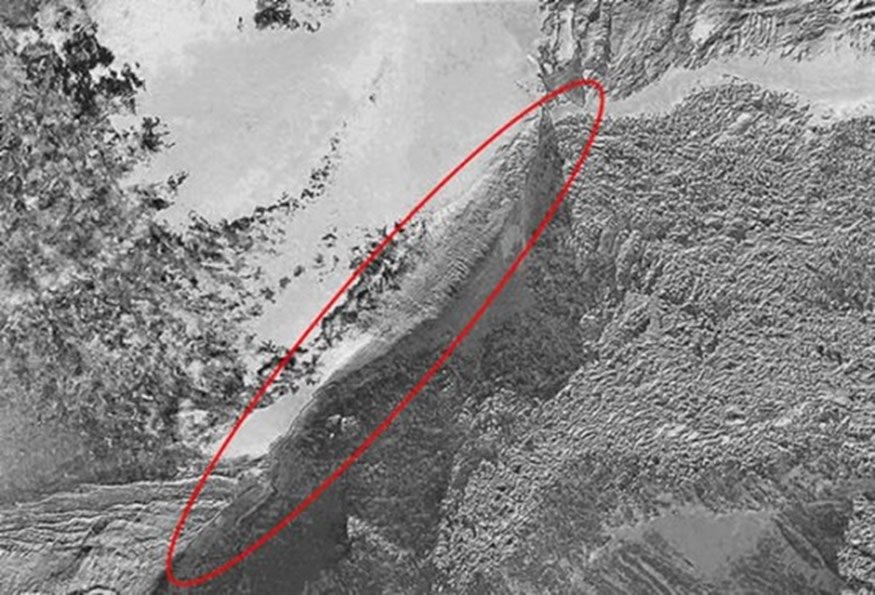Has the Ark Been Found?
The discovery of Noah’s Ark would be an unparalleled archaeological find. Throughout history, thousands of individuals have searched various mountains for the remains of this wooden structure described in the Bible and in numerous legends from cultures around the world.
Ancient reports speak of the Ark as being readily accessible to certain groups of people, even describing an annual festival that supposedly took place on a mountain slope to commemorate the Ark’s landing. Pieces of the Ark were allegedly taken and used as amulets.
In the past century, dozens of individuals have claimed to have located the Ark. Most of these modern searches have focused on Mount Ararat in Eastern Turkey. While some of these explorers claimed to have found the Ark or its remains, others are a little more cautious. They call attention to an assortment of evidence that seems to support their beliefs, such as pieces of wood found high on the mountain, as well as aerial and satellite images that show an “Ark-like” structure.

Little Ararat (left) and Mount Ararat (right). Image by Vahram Mekhitarian, via Wikimedia Commons.
Despite so many supposed sightings and evidences from Mount Ararat, it seems unlikely that Noah’s Ark has been found in recent times. And even though we would be ecstatic if the Ark were discovered, we have reason to doubt that it will be found in the future. Nor would it convince the skeptics who would simply claim it is a replica monument to a mythical boat. Certainly, it is hard to imagine a large wooden structure surviving the elements for more than 4000 years. Also, if Mount Ararat truly were the landing place, how could the Ark have survived this volcano’s numerous eruptions, which continued until 1840?
These factors have not stopped the search for the Ark or the reported sightings of it. This article will focus on five of the most popular locations for the Ark’s final resting place. Four of the locations are on or very near Mount Ararat, while the other site lies hundreds of miles from this famous peak.
Site One: The Durupinar Site
Popularized in the 1980s by Ron Wyatt and others, this “Ark-shaped” formation lies approximately 15 miles from the summit of Mount Ararat. Wyatt claimed to have found numerous artifacts in the vicinity to corroborate his claims. In the past few years, the Durupinar site has again risen to prominence after being promoted on several websites as the real Noah’s Ark.
Despite its “Ark-like” appearance and popularity, Christian geologists and archaeologists who would love to find the Ark and who have visited the location have soundly rejected the Durupinar site as nothing more than a geologic formation.1

Often heralded as the remains of Noah’s Ark, the Durupinar site is actually just one of many similar-looking geologic formations in this region of Turkey.
In fact, several similar-looking formations can be found in the region as a simple “Google Maps” search demonstrates (see the Durupinar site, and then simply zoom out a little and navigate the map to find other “Ark-like” formations). These formations are caused by mud flowing around eroded outcrops of basalt lava flows.2
Site Two: The Ahora Gorge
The Ahora Gorge is an enormous chasm on the northeast side of Mount Ararat. Dropping more than one mile from the peak of the mountain, the Ahora Gorge has been at the forefront of Ark-seeker expeditions for about a century.

The Ahora Gorge is deeper than the Grand Canyon at many points. Photo by Dr. John Morris.
Interest in this location was sparked by the claims of George Hagopian. He claimed that when he was a young boy in 1908, his uncle took him up Mount Ararat to the Ahora Gorge area. Hagopian said that they found something that looked like a large ship partially buried by snow and ice. He claimed his uncle stood on a rock pile and lifted him up so that he could walk on the roof.

Here is one of the paintings by Elfred Lee based on interviews he had with Hagopian.
At least a dozen expeditions have explored the Ahora Gorge since Hagopian reportedly walked on the Ark’s roof. However to date, none of these adventurers has been able to find the remains of Noah’s Ark at the Ahora Gorge, even though they have used satellite imagery, and explorers have searched the gorge when the glacier in it has melted back.
It is very tempting to dismiss Hagopian’s incredible claims as the imaginations of a young child. Consider the following complications with his story. Hagopian offered conflicting reports of his adventure. Was he eight years old or ten years old at the time? Was it in 1905 or 1908? Also, it is hard to imagine a youngster making this very difficult and dangerous journey without proper training.
Perhaps the greatest problem with claiming this site as the resting place of the Ark is the fact that the Ahora Gorge is on Mount Ararat. Despite popular beliefs, the Bible does not specify that the Ark landed on Mount Ararat. It states that the Ark landed on the “mountains of Ararat” (Genesis 8:4). In other words, the Ark landed in the region of the land of Ararat.
As mentioned above, this dormant volcano last erupted in 1840, and many much larger eruptions occurred during the post-Flood Ice Age. In fact, the Ahora Gorge was largely constructed by an 1840 earthquake and the resultant catastrophic erosion. Yet even though these Ark searchers say the Ark could have slid down after the gorge formed, it still begs the question as to how a wooden structure would have survived being buried by the molten lavas which erupted since the Flood ended. According to geologist Dr. Andrew Snelling, Mount Ararat likely emerged from the waters of the Flood far too late for it to have been the mountain on which the Ark ran aground on the 17th day of the 7th month of Noah’s 600th year.
Site Three: The Ararat Anomaly
We have already examined two of the popular locations of reported sightings and found them to be problematic. We will now look at another spot that has caught the eye of Ark researchers, known as the Ararat Anomaly.
In 1949, photographs of the northwest side of Mount Ararat were taken by a United States intelligence agency. A large structure can be seen jutting out of the ice and snow near the middle of the photograph below.

This object has captured the imagination of Ark hunters because it resembles a portion of a large ship. Of course, this “anomaly” may simply be a rock outcropping with just the right amount of ice and snow melted away to give the illusion of a boat-shaped object.
A satellite image taken in 2003 has breathed new life into the popularity of the Ararat Anomaly. Presumably taken of the same spot on the mountain, this overhead shot shows an elongated structure that appears to have similar dimensions to Noah’s Ark (circled in red below).

Satellite image of Ararat Anomaly, taken by DigitalGlobe’s QuickBird Satellite in 2003. Image courtesy of DigitalGlobe.
As far as I know, no expedition has explored the site of the Ararat Anomaly, but it would certainly be a stretch to conclude that these pictures are definitive proof of the Ark’s remains on Mount Ararat. The object in the images may be nothing more than a natural rock formation. Perhaps that’s why Ark searchers have not been inclined to explore this anomaly.
Furthermore, as mentioned in the previous section, finding the Ark on Mount Ararat is highly unlikely.
Site Four: Ararat—NAMI Expedition
In April 2010, a team of evangelical Christian explorers claimed to have found evidence of Noah’s Ark on Mount Ararat during their expedition there two years earlier, high up a prominent canyon on the south face of the mountain. The team represents Noah’s Ark Ministries International (NAMI), which is part of the Hong Kong-based The Media Evangelism. This group claims to be a Christian organization committed to developing a Christian media presence to promote the message of Jesus Christ.

A NAMI team member is shown examining one of the rooms reportedly found on Ararat. Image from the NAMI website.
This group claimed to have found or were told about seven wooden compartments buried on Mount Ararat, which they believe were part of Noah’s Ark. They even produced a video showing team members presumably inside one of these wooden structures.
Although we would be delighted if the Ark had actually been found, this “discovery” is likely a hoax. This is not to accuse NAMI of perpetrating the hoax, but there is a real possibility that they were victims of a fraud enacted by a Kurdish man called Paraşut.
Dr. Randall Price and Dr. Don Patton were the experts invited to be part of the expedition, but they were never permitted to see the site and were soon dropped from the team. They have documented many of the inconsistencies between what was reported and what they found in their research. For example, pictures of an alleged room in the Ark provided by Paraşut show straw, cobwebs, and a feed bowl, each in very good condition. The problem with these images is that Paraşut has claimed that the site is frequently flooded, which was his reason for not taking the expedition there in the summer months. Would a site that endured regular flooding remain in good shape for millennia?
They also interviewed a Kurdish worker who claimed to have been one of several people hired by Paraşut to construct “movie sets” on the mountain. For more details, you can read the full 52-page exposé by Dr. Price and Dr. Patton.
Finally, as mentioned above in the sections about the Ararat Anomaly and the Ahora Gorge, finding the Ark on modern-day Mount Ararat is highly unlikely. This mountain is a dormant volcano, and it likely emerged from the Flood waters far too late for it to have been the mountain on which the Ark landed.
Site Five: Mount Suleiman
The Bible states that the Ark landed on the “mountains of Ararat” (Genesis 8:4). Many people believe that Mount Ararat in Eastern Turkey is in view here, but the Bible merely places the Ark on a mountain in the region of Ararat, called Urartu in ancient times. As such, it is certainly possible that the Ark landed on a mountain other than Mount Ararat.

A military veteran named Ed Davis claimed to have seen the remains of Noah’s Ark during World War II while he was stationed in Iran. Based on his understanding of this report, Bob Cornuke of BASE Institute led expeditions to Mount Suleiman, also called the Throne of Solomon, in 2005 and 2006 to explore an alternative site for Noah’s Ark.
Cornuke provided several details about the site that he believes is a candidate for the remains of Noah’s Ark. His team found rocks that were “uncannily beam like in appearance” over 13,000 feet up the mountain, “a worship shrine,” and fossilized clams in abundance on the top of an adjoining peak. Cornuke also points to the wide variety of ecosystems in the region and the 1965 rediscovery of the Caspian horse, believed by some to be the most ancient variety of domestic horse.3
Despite these assertions, there are multiple problems with the notion that the Ark came to rest on Mount Suleiman. For example, the beam-like rocks are likely a geologic formation, the eroded edge of upended, finely bedded rock layers, according to geologists who have only been able to examine pictures. Also, it is improbable that Ed Davis’s reported sighting took place on Mount Suleiman. But the biggest problem is that Mount Suleiman lies 250 miles east of the farthest-known reaches of the ancient Urartu region. As such, this mountain doesn’t match the biblical description that the Ark came to rest on the mountains of Ararat (Genesis 8:4).
Conclusion
Expeditions will continue to search for the Ark. While it probably has not survived the elements for thousands of years, we can be confident that it really did exist because God’s Word has infallibly recorded the account of the Flood. Our Ark Encounter themed attraction shows the feasibility of this famous vessel and uses the biblical account of Noah, the Ark, and the Flood to share the gospel of Jesus Christ.
Footnotes
- See John Morris, “That Boat Shaped Rock . . . Is It Noah’s Ark?,” Answers in Genesis, September 1, 1990, https://answersingenesis.org/creationism/arguments-to-avoid/that-boat-shaped-rock-is-it-noahs-ark/ and Rick Lanser, “Noah’s Ark Update,” Associates for Biblical Research, September 26, 2008, https://biblearchaeology.org/research/contemporary-issues/3761-noahs-ark-update.)
- For a geologist’s detailed critique of the claims and artifacts that supposedly support this place as Noah’s Ark, please read Dr. Andrew Snelling’s exposé of Ron Wyatt’s claims.
- Each of these claims is mentioned in an article from the BASE Institute. See http://www.baseinstitute.org/pages/noahs_ark/17.
Recommended Resources

Answers in Genesis is an apologetics ministry, dedicated to helping Christians defend their faith and proclaim the good news of Jesus Christ.
- Customer Service 800.778.3390
- © 2024 Answers in Genesis





